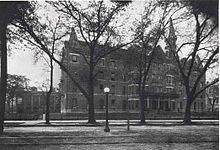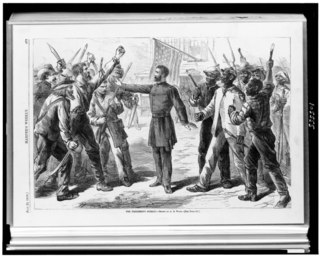
The Bureau of Refugees, Freedmen, and Abandoned Lands, usually referred to as simply the Freedmen's Bureau, was an agency of early Reconstruction, assisting freedmen in the South. It was established on March 3, 1865, and operated briefly as a U.S. government agency, from 1865 to 1872, after the American Civil War, to direct "provisions, clothing, and fuel...for the immediate and temporary shelter and supply of destitute and suffering refugees and freedmen and their wives and children".

Dillard University is a private, historically black university in New Orleans, Louisiana. Founded in 1930 and incorporating earlier institutions founded as early as 1869 after the American Civil War, it is affiliated with the United Church of Christ and the United Methodist Church.

The African Methodist Episcopal Zion Church, or the AME Zion Church (AMEZ) is a historically African-American Christian denomination based in the United States. It was officially formed in 1821 in New York City, but operated for a number of years before then. The African Methodist Episcopal Zion Church adheres to Wesleyan-Arminian theology.

Claflin University is a private historically black university in Orangeburg, South Carolina. Founded in 1869 after the American Civil War by northern missionaries for the education of freedmen and their children, it offers bachelor's and master's degrees.
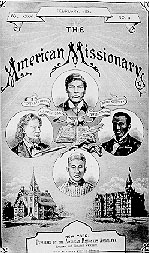
The American Missionary Association (AMA) was a Protestant-based abolitionist group founded on September 3, 1846 in Albany, New York. The main purpose of the organization was abolition of slavery, education of African Americans, promotion of racial equality, and spreading Christian values. Its members and leaders were of both races; The Association was chiefly sponsored by the Congregationalist churches in New England. The main goals were to abolish slavery, provide education to African Americans, and promote racial equality for free Blacks. The AMA played a significant role in several key historical events and movements, including the Civil War, Reconstruction, and the Civil Rights Movement.
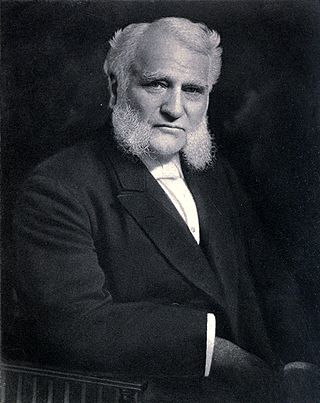
Joseph Crane Hartzell was an American Missionary Bishop of the Methodist Episcopal Church who served in the United States and in Africa.
Alexander Priestly Camphor (1865–1919) was an American Missionary Bishop of the Methodist Episcopal Church, elected in 1916.

Gilbert Haven was a bishop of the Methodist Episcopal Church, elected in 1872. He was consecrated a bishop on May 24, 1872 at the Brooklyn Academy of Music in New York. He was an early benefactor of Clark College, visualizing it as a university of all the Methodist schools founded for the education of freedmen. He succeeded Bishop Davis Wasgatt Clark as the President of the Freedman's Aid Society of the Methodist Episcopal Church.

John Wesley Edward Bowen was born into American slavery and became a Methodist clergyman, denominational official, college and university educator and one of the first African Americans to earn a Ph.D. degree in the United States. He is credited as the first African American to receive the Ph.D. degree from Boston University, which was granted in 1887.

John A. Lankford, American architect. He was the first professionally licensed African American architect in Virginia in 1922 and in the District of Columbia in 1924. He has been regarded as the "dean of black architecture".
The civil rights movement (1865–1896) aimed to eliminate racial discrimination against African Americans, improve their educational and employment opportunities, and establish their electoral power, just after the abolition of slavery in the United States. The period from 1865 to 1895 saw a tremendous change in the fortunes of the black community following the elimination of slavery in the South.
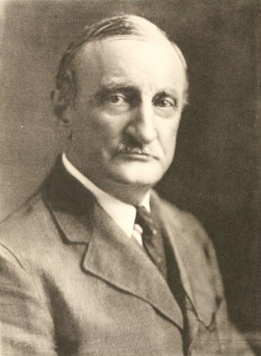
James Hardy Dillard, also known as J. H. Dillard, was an educator from Virginia. The son of slaveholders, Dillard was educated at Washington and Lee University and held a variety of teaching positions. In 1891, Dillard was named a professor at Tulane University in New Orleans, Louisiana.
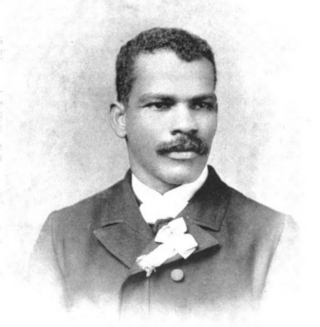
Ernest A. Lyon was an African-American minister, educator and diplomat.

Flint-Goodridge Hospital was a hospital that was for many years located at 2425 Louisiana Avenue, next to LaSalle Street, in uptown New Orleans, Louisiana, US. For almost a century (1896–1983) it served predominantly African-American patients and, for most of these years, was owned and operated by Dillard University, a historically black university.

Hightower Theodore Kealing, also known as H.T. Kealing was a writer, educator, and prominent member of the African Methodist Episcopal Church. Born as the son of former slaves, Kealing was among the first generation of African Americans to attend school during Reconstruction.

Haven Institute and Conservatory of Music, also known simply as Haven Institute, was an American private historically black Methodist college active from 1865 until the early-1930s, located in Meridian, Mississippi. It was founded in 1865 by Moses Austin, a pastor of the Saint Paul Methodist Episcopal Church of Meridian and a formerly enslaved person. Originally it was called Meridian Academy and it was located at 27th Avenue and 13th Street in Waynesboro, Georgia, however the name changed in 1914 and the campus moved in 1921.
Gilbert Academy was a premier preparatory school for African American high school students in New Orleans, Louisiana. Begun in 1863 in New Orleans as a home for colored children orphaned by the American Civil War, the home moved to Baldwin, Louisiana in 1867. The Orphans Home evolved into a school and, over the next 80 years, became Gilbert Academy, a college preparatory school for African Americans. Gilbert Academy returned to New Orleans, achieved accreditation by the Southern Association of Secondary Schools and Colleges, and graduated many notable students until it closed in 1949.
John Louis Wilson, Jr.,, (1898–1989), was an American architect. He was one of the first African American architects to be registered in New York State. He had worked for New York City Department of Parks and Recreation and also maintained a private architecture practice in the New York City.
William Wilson Cooke (1871–1949) was an American architect. He worked in the Office of the Supervising Architect of the United States Department of the Treasury and was the first African American man to be employed there. Cooke was the first African American to obtain an architect’s license in the state of Indiana in 1929. He designed many buildings for Claflin College, the Cookman Institute, and the United States Postal Service. Early in his career he worked as a school official.
